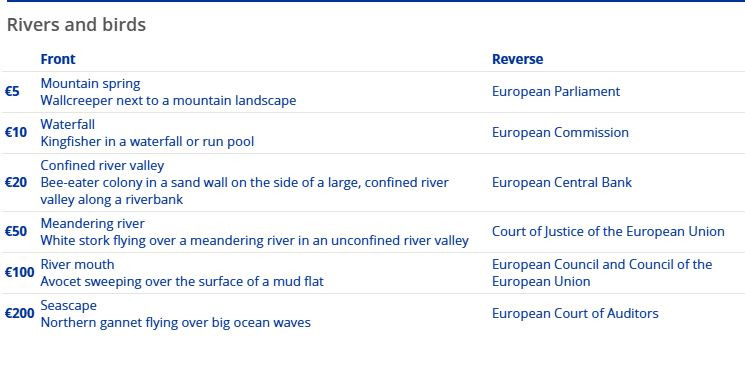The final decisions on their form will be made in 2026, and their circulation will take place a few years after
The European Central Bank (ECB) today presented the default patterns based on the two possible issues for new euro banknotes. The final decisions on the form of the new euro banknotes will be made in 2026, and will be released a few years later.
As announced today, in 2025 the ECB will set up the jury and launch a planning competition, which will be open to designers from all over the European Union.
However, the patterns chosen by the Board of Directors of the European Central Bank depict the two possible issues of future euro banknotes.
The first issue, “European culture”, focuses on common cultural sites and prominent Europeans. The second issue, “rivers and birds”, focuses on the durability and diversity of the natural world, complemented by the European institutions.
“We are very pleased to present these real patterns that reflect our commitment to Europe and celebrate its cultural heritage and its natural environment,” ECB President Christine Lagarde said. “The new banknotes will symbolize our common European identity and the diversity that makes us strong,” he added.
We’re Redesigning Euro Banknotes! Our Governing Council has selted motifs based on our two chosen themes, “European Culture” and “Rivers and Birds”.
We’re launching a design contest this year to Help us select the final designs in 2026.
Read the press release… pic.twitter.com/dekllsbx3y
– European Central Bank (@CB) January 31, 2025
“European culture‘
The patterns of this subject depict various cultural activities and spacesas well as emblematic European personalities which contributed to the construction of Europe’s cultural heritage.
Their lives have covered six centuries during which they lived, traveled and worked throughout our continent and their achievements have resonated around the world. For example, on one side of the 5 euro banknote, Maria Callas is depicted and Beethoven at 10 euros.
‘Rivers and birds’
The theme “Rivers and Birds” highlights the durability and diversity of Europe’s natural ecosystems, through the depiction of different parts of the flow of rivers, and various species of birds, emphasizing the importance of nature and environmental protection. The European institutions depicted in the banknotes remind us of the fundamental values of the European venture, which also supports environmental protection.
The decision was based on the proposals provided by two interdisciplinary advisory groups from the entire euro area and is in line with preferences on issues expressed by more than 365,000 Europeans in public surveys, which took place in the summer of 2023 and in catering groups conducted between December 2021 and March 2022.
Source: Skai
I am Janice Wiggins, and I am an author at News Bulletin 247, and I mostly cover economy news. I have a lot of experience in this field, and I know how to get the information that people need. I am a very reliable source, and I always make sure that my readers can trust me.











